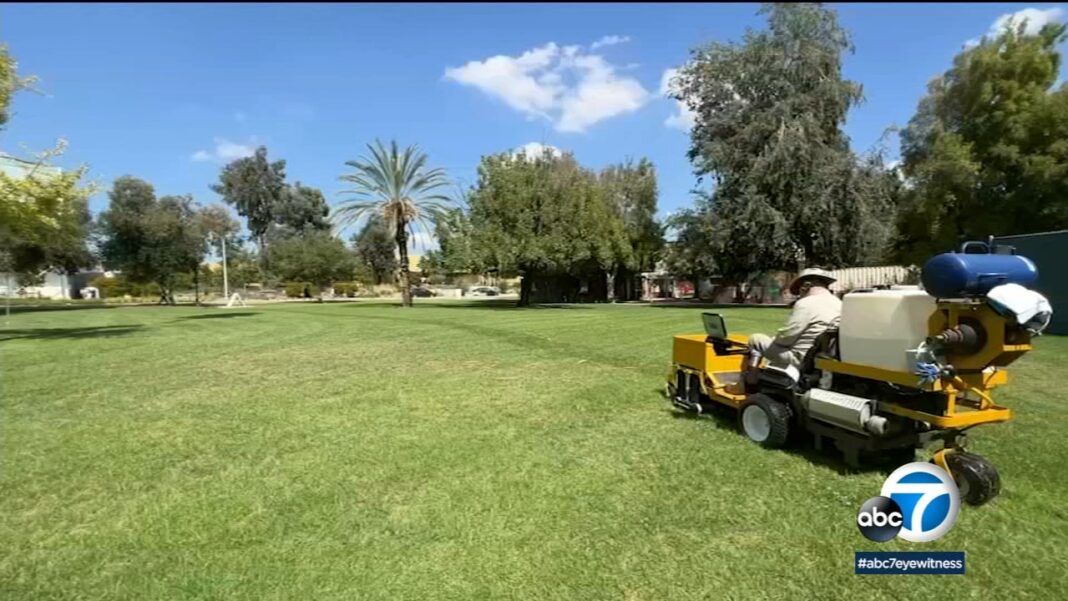NORTHRIDGE, Calif. (KABC) — Water conservation is a focus across California, but is there a way to keep large fields of grass green when water restrictions are leaving homeowners with dying grass? Elaine Sibert, the CEO of Rain Systems , believes it’s possible and could make a huge difference for all of us. “The cumulative savings with all of these different large turf areas would make an astronomical change in how much water is being used,” she said.
Rain Systems is a local company providing customers like Cal State Northridge with a 50-70% reduction in water needs for the spaces treated with their patented technology. Turf areas that remain green through our harsh summer. Austin Eriksson, the director of Energy and Sustainability at CSUN, has seen the savings and the effectiveness of Rain Systems since 2015.
Lasagna mulch? Monrovia conservation group helps retired nuns plant drought-tolerant landscaping “It’s pretty green. It looks really good and if you were to go around campus and look at the locations that we have installed this at, you’d notice that they’re greener than the other locations and that’s simply because the water’s being held at the roots,” Ericksson said. That is done through the use of hydrogels — polymers that have been around for nearly 50 years that can hold large amounts of water and are commonly used in the medical field and daily household products.
“I just became obsessed with using it in turf,” said James Sibert of Rain Systems . Sibert’s “obsession” looks like a riding lawn mower, but uses 3-4,000 pounds of water pressure to make a tiny hole of water into the ground, and at virtually the same instant, blows a polymer into that same hole. Could pulling water out of thin air help Californians beat the drought? “Once they’re in the ground and they’re hydrated, they become hydrogels,” explains Elaine Sibert.
The polymer can hold up to 200 times its weight in water, is 100% biodegradable and can last for 3-5 years, allowing for water to be slowly absorbed at the turf’s roots, instead of being lost to evaporation or sinking too far below the surface. “Every cemetery in the world should use this. Every football field in the world should use this.
Every park in the world should use this. And most homeowners should use this,” James added. CSUN is removing 900,000 square feet of grass to be replaced with drought resistant landscaping in the effort to be more water-wise.
But a college campus is similar to other large spaces that needs some grass, and Rain Systems is offering a way to conserve while keeping those spaces beautiful. “This allows us to come some of our grass green, especially in extreme drought conditions like we’re in right now. .
. the hydrogels along with a slew of other strategies have helped us drop our water consumption 31% less water today than we were in 2019,” said Eriksson. “Drought is an issue not only here in California, but all over the world.
And different places are looking for solutions. We feel like we are, in some ways, just getting started,” Elaine added. .
From: abc7
URL: https://abc7.com/water-conservation-california-green-grass-rain-systems/12247670/



